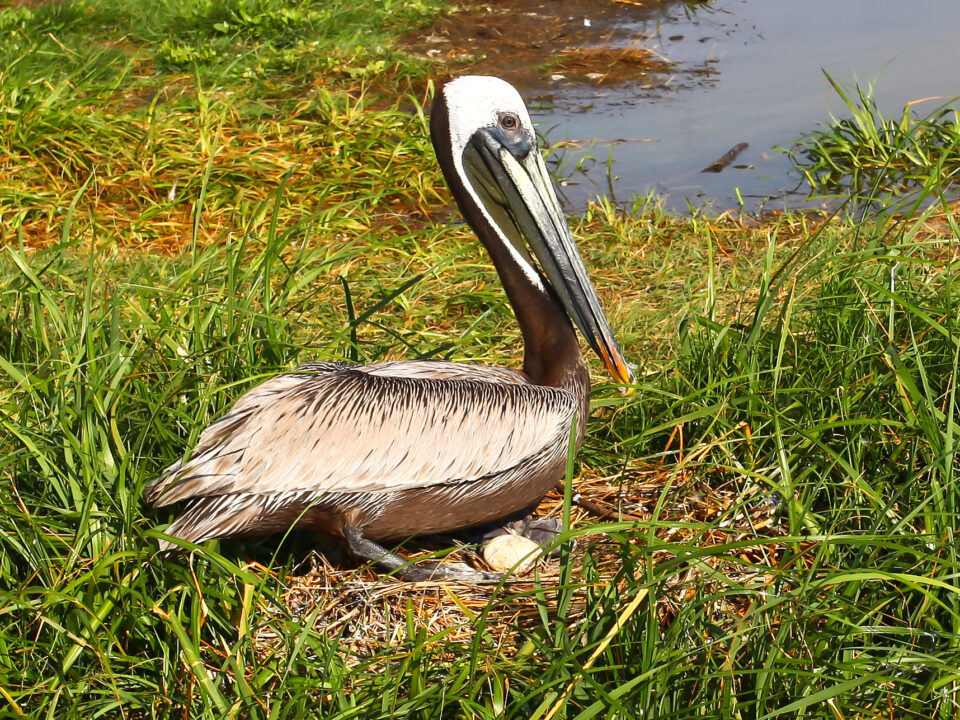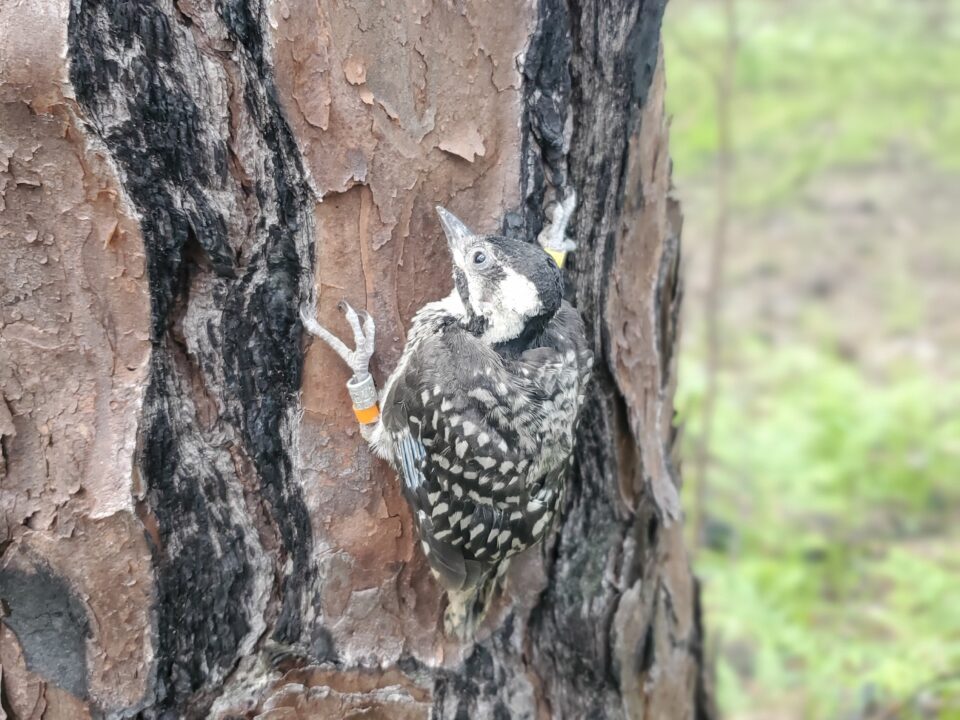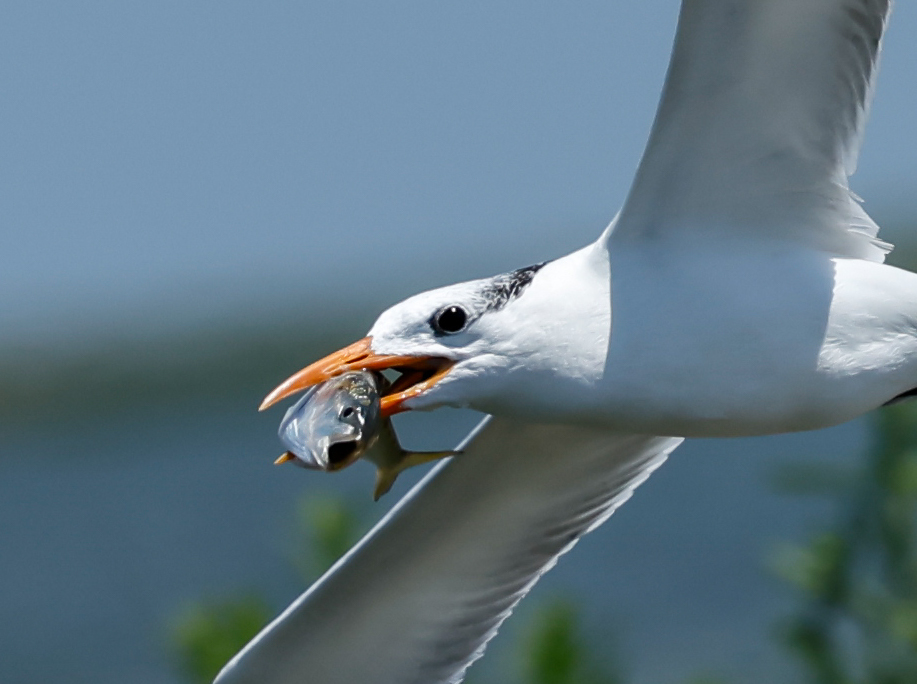Dancing with the dragon
Grace Flies to Mattamuskeet NWR March 1, 2015
March 2, 2015
Grace Returns to Tidewater Research Station Mar 5, 2015
March 6, 2015Leonardo da Vinci describes the duality of the research experience as standing before the mouth of a grand, unexplored cavern. Peering into the black, one is simultaneously struck by the sweet anticipation of discovery and the fear of the journey. Not a fear of the unknown itself but the fear of losing yourself to the journey, or just the opposite, the fear of becoming the bleached piece of driftwood thrown up so high on the beach by a storm that you may never feel the caress of water again.
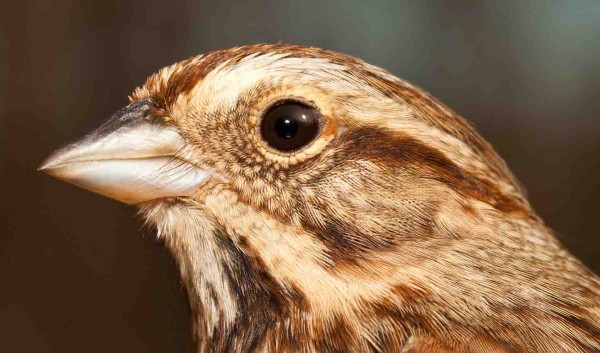
Song Sparrow. Photo by Bryan Watts.
For those of us who have grown up in the bird world, sometime in our late teens, the questions that occupy our days undergo a seismic shift. Our obsessions with learning plumages and subtle song dialects drift into the backwater. New questions begin to appear from nowhere. Why is the home range of one species four times larger than that of another? Why does this bird migrate thousands of miles while this one stays home? Why do birds that nest in cavities incubate so much longer than those that nest in the open? And what is up with some females that must chase males with the longest tails or the bluest legs or the loudest song? These new questions are those of an explorer standing on the shoreline of an immense sea. It is our first encounter with the dragon. Like Steinbeck, he is shouting, “Thou mayest”, and the choice is laid out before us to set sail on a life of research or stay safely moored in the harbor. In the end, either we choose to splash and play in the shallows or, as Dylan says, we dive deep and marry the mermaid.
At this early age, the raw energy burns white hot and consumes everything in its path. Like a flood in the headwaters moving rocks and ripping out trees, the powerful wave of questions runs over us. We are unsure of our path and destination. We lack the foundation and discipline to order the questions in meaningful ways. But despite the uncertainty and the mayhem, we are miraculously transformed into the cock of the rock. We feel the universe has bestowed upon us a unique insight. Our world is painted in black and white. We proclaim that we have solved the great mysteries and describe the dragon in vivid detail. The old ones look on with compassionate eyes but say nothing. We do not know at this young age that the real questions are far downstream. We will have to run the rapids to have any hope of reaching them.
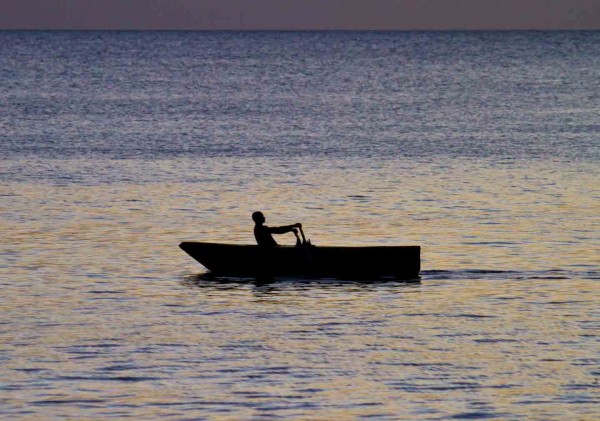
Rowing Man. Photo by Bryan Watts.
The questions are relentless and they become our constant companions. Night after night we lie awake contemplating strategy, sending our mind down so many promising avenues that under scrutiny lead to dead ends. We move knight to queen’s bishop 3 only to be countered. We order a battalion around the left flank only to be cut off near the river by a full regiment. Like the second labor of Hercules with the hydra, each time one question is answered two more appear in its place. The defeats are enough to shrink any cock of the rock down to a chirping sparrow. But over time we begin to understand how to effectively approach questions, we gain strength, the dragon gives ground and knight takes queen. Time in the rapids has taught us the hows and whys of research.
By the time we finally enter the flat water, we have gained purpose and direction. We know which research questions are worth pursuing and how to exploit the soft underbelly of their defenses. We have become high disciples of the scientific method. We get to work. We stand high on the hill and orchestrate our troops. We cut a wide swath across the landscape, taking minimal casualties. We stack up victories like cordwood for the Arctic winter. In our swagger we believe that we have mastered the dragon.
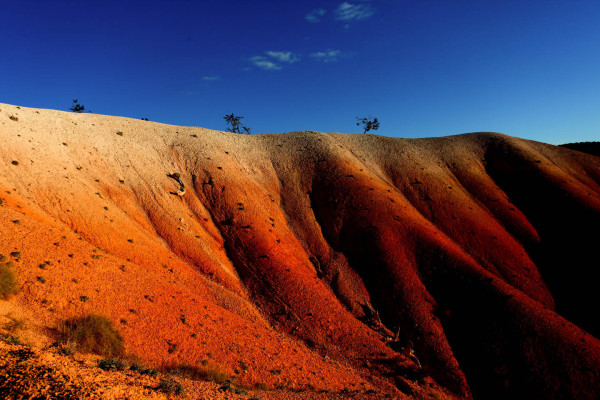
Sunset on Sand. Photo by Bryan Watts.
The revolutionary Princeton ecologist Robert MacArthur was noted for stating that any experienced bird watcher could walk into a habitat and tell you which birds would be found living there, but if we did not quantify, analyze and interpret their distribution, the patterns would continue to be sensed without ever being communicated effectively to future generations. He was right. But after thousands of questions and years on the battlefield, we begin to contemplate the broader meaning. Inevitably, we reacquaint ourselves with the dragon. We begin to recognize that there is a limit to how far numbers can take us, that there is a point along this journey beyond which investigations cease to provide any traction. What we can measure and prove provides only the black-and-white skeleton of a broader reality. The fresh, changing picture of a species with all of its vibrant color belongs to an infinitely larger domain beyond the reach of numbers. All of our experiences tell us that mystery is an essential element in the dance between what we know and what we don’t know. Mystery is not something to be conquered but something to be savored. Without mystery there is no exploration.
The new peace accord with the dragon represents the end of one journey and the beginning of another. We look around to see that we have passed out of the river mouth and have entered the immense sea near the shoreline where we stood as a teen. Now surrounded by cock of the rocks, we say nothing. We recognize that every riffle and pool along the way is precious and anyone who musters the courage to leave the harbor is entitled to his own journey. Ours is just beginning anew. This time we carry not only the curiosity of a child but an experienced mind left open to mystery.
T.S. Eliot was right in East Coker, “old men ought to be explorers”.
Written by Bryan Watts | bdwatt@wm.edu | (757) 221-2247
March 2, 2015

